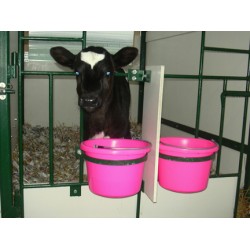- Acute mastitis affects between 4-5% of lowland ewes and 1-2% of hill ewes each year. Chronic mastitis affects between 1-15% of ewes.
- Ewe mastitis has important impacts on ewe mortality, premature ewe culling, lamb mortality and growth.
- Mastitis can be per-acute, acute, chronic and clinical or sub-clinical depending on the severity and duration of clinical signs in the ewe.
- The main risk period for clinical mastitis is the first week post lambing to around peak lactation at 3-4 weeks post lambing.
- The most common bacteria found in mastitis cases are Staphylococcus aureus and Mannhaemia haemolytica, although other bacteria may occur.
- The bacteria enter the udder through the teat canal, some are transferred from the lambs’ mouths when sucking.
- Factors which damage the ewes’ teats, e.g. chapping, orf or excess sucking by hungry lambs, increase the risk of a ewe developing mastitis.
- Ewes feeding 3 or more lambs are at increased risk of mastitis.
- Treatment of ewes with mastitis should be prompt and is aimed at saving the ewe’s life as damage to the udder can be permanent.
- Ewes chronically affected by mastitis should be culled.
- All ewes’ udders should be inspected at weaning and at the pre-tupping check.
- Preventative strategies for mastitis should be discussed with your vet as part of your health planning for the flock. Consideration should be given to ewe and lamb nutrition pre and post lambing, maintaining good ewe teat condition, and environmental hygiene.
- The viral infection Maedi-Visna can cause chronic mastitis in sheep and requires aseparate approach.
written by Ruth Zadoks, MRes, MSc, DVM, PhD (Moredun and University of Glasgow) and Jennifer Duncan BVM&S, BSc(Hons), PhD, DipECSRHM, MRCVS (University of Liverpool)
0Comments
For Comment you need to Login




